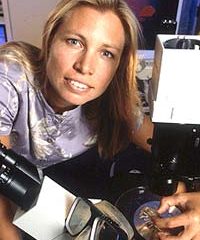Life Sciences and Chemistry
Articles and reports from the Life Sciences and chemistry area deal with applied and basic research into modern biology, chemistry and human medicine.
Valuable information can be found on a range of life sciences fields including bacteriology, biochemistry, bionics, bioinformatics, biophysics, biotechnology, genetics, geobotany, human biology, marine biology, microbiology, molecular biology, cellular biology, zoology, bioinorganic chemistry, microchemistry and environmental chemistry.

Why have sex? The answer is not as simple as we thought.
Theories abound as to why organisms favour sexual reproduction, but testing these has been notoriously difficult. A common view is that sexual reproduction helps to reduce the effects of damaging mutations within a population. Now researchers from the Rockefeller University have tested this premise, using careful measurements of bacterial populations, and provide evidence against it. The research published today in Journal of Biology examines how mutant bacteria respond to different forms of

Yeast genomes reveal new sites of gene control
Researchers at Washington University School of Medicine in St. Louis have begun unraveling the network of genes and proteins that regulate the lives of cells. The investigators compared the genome of the yeast Saccharomyces cerevisiae (S. cerevisiae) to those of five other yeast species to identify all the locations at which molecules known as regulatory proteins attach to DNA to turn genes on and off. The study is published in the May 30 issue of the journal Science.
Among the many potenti

Seaweed uses chemical warfare to fight microbes
Scientists have discovered that seaweeds defend themselves from specific pathogens with naturally occurring antibiotics. The finding helps explain why some seaweeds, sponges and corals appear to avoid most infections by fungi and bacteria, according to a study published May 19 in the Proceedings of the National Academy of Sciences.
“Seaweeds live in constant contact with potentially dangerous microbes, and they have apparently evolved a chemical defense to help resist disease,” said lead author

Researchers identify protein which could help protect against neuro-degenerative conditions
Protein could be used as a treatment for Alzheimer’s, Parkinson’s, and Huntington’s disease
A team of researchers from Imperial College London, the Charing Cross Hospital and University College London have identified a protein which could be used to protect against neuro-degenerative conditions such as Alzheimer’s, Parkinson’s, Huntington’s, motor neurone diseases and the damage caused by strokes.
According to research published today in The Journal of Biologi

Climate change good for the birds?
Research from a team at the Swiss Ornithological Institute, to be published in a forthcoming Proceedings B, a learned journal published by the Royal Society, reveals complex effects of global warming on migratory habits of birds. These effects may constitute a serious threat to some species – in particular those with longer migratory flights.
Over the past two decades spring temperatures in temperate regions have increased. This effect, due to global warming, has advanced the start of the r

Born under the sun: UV light and the origin of life
Early evolution of life as we know it may have depended on DNA’s ability to absorb UV light. This insight into the early moments of life on Earth comes from research published today in the journal BMC Evolutionary Biology.
The research fills in one of the major gaps in our understanding about the origins of life: how single molecules were able to join together to create the self-replicating long chain molecules of RNA, the precursors of DNA. It “sheds new light on the earliest steps of evo